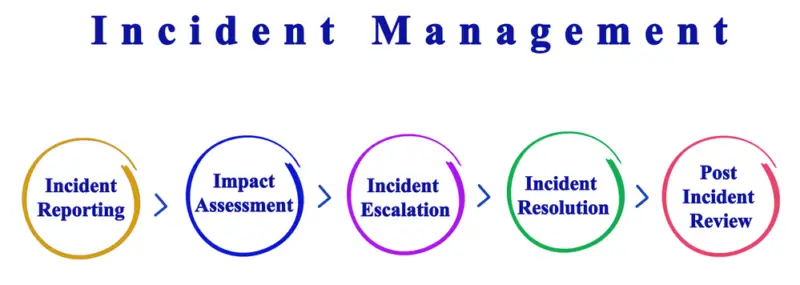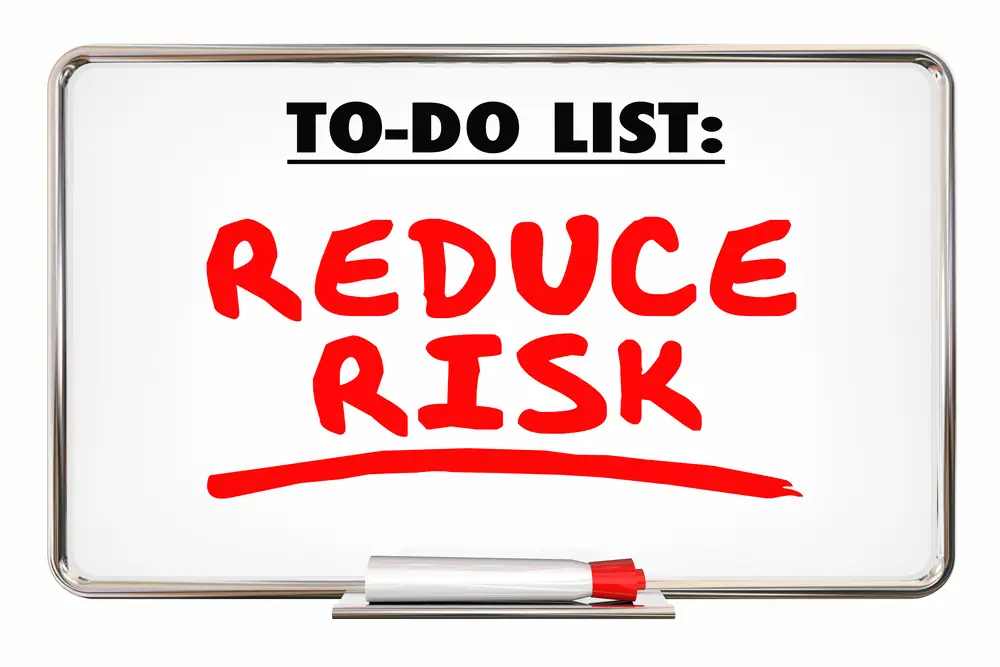Risks come in many forms, and it’s important to understand the difference between them to make sound financial decisions. One type of risk is business risk, which is the chance that a company will experience a loss due to factors such as competition, changes in the marketplace, or new technology.
Another type of risk is market risk, which is the chance that investments will lose value due to changes in the overall market. Then there’s credit risk, which is the risks based on the chance that a borrower will default on a loan. And finally, there’s liquidity risk, which is the chance that an investment can’t be sold quickly at a fair price.

Each type of risk has unique characteristics, and it’s important to understand them before making investment decisions. But how can we estimate risks? By analyzing risk, we can better understand our risk environment and take proactive measures to minimize potential losses.
1. Define the Risk
The first step in estimating risk is defining exactly what you’re trying to assess the risk of. This may seem like a no-brainer, but it’s important to be as specific as possible. For example, suppose you’re trying to estimate the risk of starting a new business. In that case, you’ll want to consider the industry you plan to enter, the amount of capital you have available, your team’s experience and expertise. Being as specific as possible will help you accurately identify and assess the risks. This is the first step in risk management process.
2. Identify Potential Outcomes
Once you’ve defined the risk, it’s time to consider cost risk and potential outcomes. What are the possible outcomes of this risky decision or situation? Again, be as specific as possible. In our example of starting a new business, potential outcomes might include things like failing to gain traction and having to shut down within a year, being profitable but only breaking even after five years, or becoming a major success and generating significant returns within three years.
Be sure to consider both positive and negative outcomes when identifying potential outcomes – after all, the risk always involves some element of uncertainty.
3. Assign Probabilities
The next step is assigning probabilities to each potential outcome. In other words, how likely is it that each particular outcome will occur? This is where things can get tricky, as it can be difficult to assess probability accurately. However, there are a few methods that can help.
One common method is what’s known as “gut feeling.” Simply put, this involves going with your gut instinct when estimating probability. Another method is “historical analysis,” which involves looking at past data (e.g., historical trends in your industry) to predict future probabilities better.
Whichever method you choose, be sure to be as objective as possible when assigning probabilities – remember, this is an estimation exercise, so there’s no need to be 100% accurate; accuracy should not be your goal here. Just do your best to come up with numbers that reflect your best assessment of reality.
4. Multiply Probabilities by Consequences
The final step in estimating risk is multiplying each potential outcome’s probability by its consequences (i.e., the impact it would have on your goal). For example, if there’s a 50% chance that your new business will fail within the first year and generate a loss of $100,000 (in terms of both money invested and opportunity cost), then the expected value of that outcome would be 0.5 x -$100,000 = -$50,000. In other words, on average, you would lose $50,000 if your new business failed within its first year.
Once you’ve calculated expected values for all potential outcomes, you can compare them side-by-side to determine which option represents the least risk. And there you have it – four steps for estimating risk! The next time you find yourself needing to make a risky decision, Armed with this knowledge, you’ll be able to calculate expected values and make an informed decision.
Anyone who has decided knows that estimating risk is an important part of the process. But how do you know if you are accurate in your estimates? This blog post will discuss some tips for estimating risks and ways to improve your accuracy. We will also look at some factors that can influence risk estimation.
What are risks?
Risk refers to unforeseen events which could occur during certain decisions. They could have positive or negative aspects, such as the underselling and the sale of products. Risk estimation consists in measuring risk and severity in determining the likelihood. This risk is captured in your risk traceability risk matrices, or your Risk Analysis. A structured assessment process is crucial for systematically identifying and analyzing these risks.
The risk types include health and safety and health care. These are controlled via risk management, which examines the potential risk events you might encounter when you make a decision. Once this information becomes clear, you should then undertake a risk assessment
A risk could potentially happen in the future and cause harm. Risks can be measured in terms of their probability, or how likely they are to occur, their severity, or how much harm they could cause. High-probability risk occurring, high-severity risks are typically given the most attention as they pose the greatest threat to safety and security
However, it is also important to consider low-probability and high-severity risks and those more likely to occur but cause less harm. Absolute terms, such as “100% certain” or “impossible,” should be avoided when discussing risks, as there is always some degree of uncertainty.
More data is an important factor in assessing risks, as it can help to identify potential hazards and track changes over time.
Risks Impact
Risk impacts are numerical values that measure how significantly risk affects a project or business, often described as low, medium, or high. Low-impact risk is an issue that a project could easily afford. Medium-impact risks require resource management but are regarded as easily controlled. High-impact risks require considerable resources and can be fixed.
The impact of risk can be positive or negative and is measured in terms of its effect on objectives. When assessing risk, it is important to consider both the probability and severity of potential risk impacts. Qualitative risk analysis is a non-numerical method for identifying and evaluating risks, focusing on written definitions of uncertainties and their potential impacts. For example, a small probability but severe impact would warrant a higher level of concern than a high probability but low impact.
In general, risks with a high probability and high impact should be given priority for mitigation efforts. Probability and impact are often represented visually using a risk matrix, (e.g., low/medium/high). This can help to identify risks that may warrant further analysis quickly.
Risk tolerance
Risk tolerance is how risky it is. The result is dependent upon several factors. Hiring new staff. The new employee can perform poorly at work, even with an excellent interview. Many employers will accept inexperienced employees to start at the top. The risk tolerance is high. Risk tolerance could also fall among senior risk managers managers
Organizations must make risk tolerance decisions when contemplating managing their risk exposures. The organization’s board of directors is generally responsible for overseeing the development and approval of the organization’s risk assessment matrix and tolerance statement.
The statement guides management on how much risk the organization is willing to take in pursuing its strategic objectives. The amount of risk an organization is willing to take will vary depending on its size, industry, financial condition, and other factors.
Management must then develop strategies to ensure that the organization’s exposures are within its tolerances. When making risk management decisions, organizations should always consider both the upside and downside potential outcomes.
Taking too much risk can lead to financial ruin while taking too little risk can stunt growth and limit opportunities. It is important for organizations to strike a balance that meets their specific needs and objectives.

Risk assessment
A risk assessment is a process for identifying and evaluating these risks. It helps organizations to identify the potential severity of each risk and the likelihood that it will occur. A risk assessment aims to identify which risks pose the greatest threat to an organization and to develop mitigation strategies to reduce the impact of these risks. Many different methods can be used to conduct a risk assessment, but all share the same basic steps: identify the risks, assess the potential impact, and develop mitigation strategies. Risk assessment matrices can be used to establish clear criteria for assessing risks within a structured framework.
Risk analysis is part of risk management. It initially focuses on assessing and analyzing potential risks. The last step in risk analysis and assessment is risk estimation, which aims at determining what risks are likely to impact your plans.
Risk Probabilities
In any given situation, there is always some likelihood that an unfavorable event will occur. This likelihood is known as the risk probability. Risk can be divided into two broad categories: pure risk and speculative risk. Pure risk, also known as personal risk, is the type of risk that cannot be controlled or mitigated.
example of pure risk would be being struck by lightning or public health disease breakout. On the other hand, the speculative risk is the type of risk that can be controlled or mitigated. An example of speculative risk would be investing in a new business venture. When making decisions, it is important to consider the risks involved carefully. Some can resemble irrational mispricing and are not predictable based on the following list.
Risk Probabilities are how likely a risk is to happen. The product may have an extremely high or extremely low rating. This may also be illustrated by a numerical range i.e., from 1 to 5. Successful risk management involves accurate measurement and ongoing monitoring to effectively evaluate and mitigate these risks.
Factors that can influence risk management
Several factors can influence risk estimation. One of the most important is the type of data used in project risk management. Data from observational studies, for example, is often less reliable than data from randomized controlled trials. In addition, the size of the study and the population being studied can also impact risk estimation of project risks.
One of the most important factors is the availability of information. When reliable information is available, it can be used to make more accurate estimates of risk. However, it can be difficult to arrive at an accurate estimate when information is scarce or conflicting. Another important factor is the level of uncertainty involved.
In some cases, the consequences of a particular an event occurring may be well known, making it easier to estimate the risk. In other cases, the consequences may be less clear, making it more difficult to estimate the risk., personal biases can also influence the risk estimation. Individuals may be more or less likely to take risks depending on their beliefs and experiences. As a result, risk estimation is a complex task that is influenced by a variety of factors.
For example, studies with small sample sizes are often less reliable than those with large sample sizes. Finally, how data is analyzed can also affect risk estimation. Statistical methods that are not well-validated can produce inaccurate results.
Estimate risks by identifying potential hazards and assessing the risk likelihood of them occurring
One of the first steps in risk management is to identify potential hazards that could affect your business. This can be done by conducting a hazard analysis, which involves looking at all aspects of your business operations and identifying anything that could cause harm using risk estimates.
Once potential hazards have been identified, the next step is to assess the likelihood of them occurring. This can be done by prioritise risks by considering factors such as the severity of the potential harm, the probability of the hazard being realized, and whether any controls are in place to mitigate the risk.
Consider the severity of the hazard if it does the occurrence.
For example, a chemical spill is more severe if it is likely to happen often and would result in extensive environmental damage. However, even a relatively small spill could be considered severe if it were to occur in an enclosed space where people would be exposed to harmful fumes. In other words, the severity of a hazard is determined by its potential to cause harm, not just by its likelihood of occurring.
Take steps to mitigate the risk of a hazard happening
A hazard is any situation that could cause harm. Many things in our environment could potentially be hazardous, but there are also many ways to mitigate risks and reduce disaster risk reduction.
For example, if you are worried about being injured in a car accident, you can reduce your risk by wearing a seatbelt and driving defensively. If you are concerned about being harmed by exposure to chemicals, you can reduce relative risk by using personal protective equipment and following safety guidelines.
Review your estimate regularly and update it as needed
Returns are the amount of money an investment makes over a certain period of time. Risk is the chance that an investment will lose money or not make as much money as expected. Different investments have different levels of risk. For example, stocks are usually riskier than bonds.
Cash flow is the amount of money coming in and out of an investment. Volatility measures how much an investment’s price changes over time. Reviewing your estimate regularly and updating it as needed can help you to keep track of your investments and make sure they are performing as expected.
This can help you to avoid losses and make the most of your money. Including return or cashflow process, risk scores, violate familiar volatility bounds in your estimate will give you a better idea of how your investment is doing and whether or not it is worth keeping.
Risk Estimate – an overview
Decision-making is essential for being the project manager. Decisions typically require some kind of trade-off. When evaluating your decisions on project tasks, assess whether the outcome is good or bad.
Estimation risk refers as an investor’s unpredictability regarding parameters associated with return and cash flow processes. Our data show that the observable properties of value and profit may differ from those rational investors see. Thus testing market efficiency.
Similarly, parameter uncertainty can lead to returns predictability reminiscent of unreasonable mispricing.
Price fluctuations can differ significantly when the investor has reason to be rational. The expected returns deviate from CAPM when investors try to maintain the average volatility efficient portfolio forming key elements of a risk register. The deviations may be forecasted through dividend and price changes.
Why estimate risk before risk controls?
It is important to estimate risk before implementing risk controls for several reasons. First, without understanding the potential risk magnitude and of the loss, it is difficult to determine whether the cost of the control is justified.
Second, different controls are effective at mitigating different types of risks, so it is important to have a clear understanding of the risks involved to choose an appropriate control. Finally, even after controls are implemented, some residual risk will always remain; by understanding the risks upfront, organizations can make informed decisions about how much residual risk they are willing to accept.
As you design the device to mitigate risk, there are many factors to consider, such as some other risk mitigation controls. It is advisable for people unaware of risk control measures to keep them simple.
Suppose an accident occurs and someone is injured, leading to a trial. In that case, it is much better to demonstrate that you decided to implement insulation on cables, an insulating cover on the device, and an earth connection instead of just earthed ground wire to reduce the chance of a fire.
Sensitivity analysis is a tool used by investors to induce return predictability. By analyzing a project’s sensitivity to changes in different variables, investors attempt to find which variable is most important to the project.
Once the most important risk management variable has been identified, the investor can then focus on that variable when making asset pricing decisions. While sensitivity analysis can be helpful, it is important to remember that it is only one part of the investment process. Ultimately, it is up to the investor to use all available information to make the best investment decisions possible.
Estimate the damage, not the danger
The probability of an injury occurring should always be estimated. There is no likelihood of the occurrence of dangerous situations, but the risk likelihood real damage is done. Why do people often find hazardous situations difficult? You will have to estimate whether there are sequences that lead to an accident and if this is likely to cause harm to people.
Market efficiency
Market efficiency is the degree to which a market reflects all relevant information in asset prices. A perfectly efficient market would reflect all relevant information instantaneously and perfectly in asset prices, and transaction costs would be zero. In practice, however, markets are only approximately efficient in numerical value, especially a medical device.
The degree of efficiency depends on the properties perceived of the particular market under consideration. For example, medical devices may be more likely to be efficiently priced than other assets because there is greater information transparency and liquidity ( ease of trading).
A numerical measure of market efficiency can be constructed by comparing the actual price of an asset to the theoretical price which would exist in an efficiently functioning market. The difference between these two prices is known as the “price anomaly.” If the price anomaly is high, the market is inefficient.
Past dividends are one factor that may be relevant to the pricing of a stock but are not reflected in the current share price. As a result, stocks with high dividend yields may be considered underpriced ( relative to an efficiently functioning market).
Conversely, stocks with low dividend yields may be considered overpriced. There is empirical evidence that suggests that dividend yield is a good predictor of future stock returns, which supports the view that markets are inefficient in this respect.
Example of Environmental risk estimation
The study indicates even an extremely low emissions trajectory could result in significant increases in global climate risk levels in the future (doubling the composite risk score), the study concludes. Currently, around 25% of the Risk items examined are expected to experience very high to very low-risk levels in the coming decade, even under RCCP2.6, with an average risk ratio of 16 per 25 items.
Evaluating the escalating and systemic nature of climate risk globally
In addition, as mentioned previously, these analyses underestimate the potential, not linear, nature of risk development over time. The effect of interaction among the risk items is illustrated as Systemic Risk in software project management and risk management
It acknowledges, for example, that the interaction of climatic and non-climatic drivers, including land use pollution and over fisheries, leads to considerable regional variations of risk and exposure.

Projected global climate risk
The IPCC’s Special Report allows the comparability of global composite risks under two representative concentration paths (RCPs) versus mean-variance efficient portfolios of +2 °C. Global sustainable development goals developed by the united nations office estimate that climate change will be destructive and will increase investor uncertainty and risk level.
5 °C versus 2 °C
The study also demonstrates a mean global temperature rise from ‘undétectable to moderate over the current time frame and from ‘moderate.’ These results are given a medium confidence level based on five IPCC estimates for the corresponding +1.5°c and +2°c and six more for a high confidence level.
Conclusion
There’s no such thing as a completely safe decision – everything we do in life involves some risk. But by taking the time to Define, Identify, Assign, and Multiply potential risks by outcomes and their corresponding probabilities by Consequences, we can get a much clearer picture of those risks and make informed decisions accordingly.

Chris Ekai is a Risk Management expert with over 10 years of experience in the field. He has a Master’s(MSc) degree in Risk Management from University of Portsmouth and is a CPA and Finance professional. He currently works as a Content Manager at Risk Publishing, writing about Enterprise Risk Management, Business Continuity Management and Project Management.

